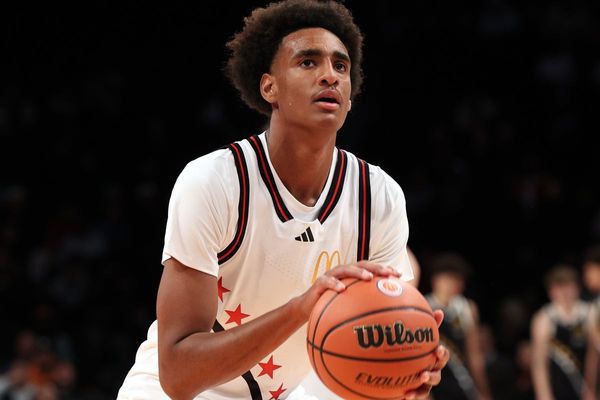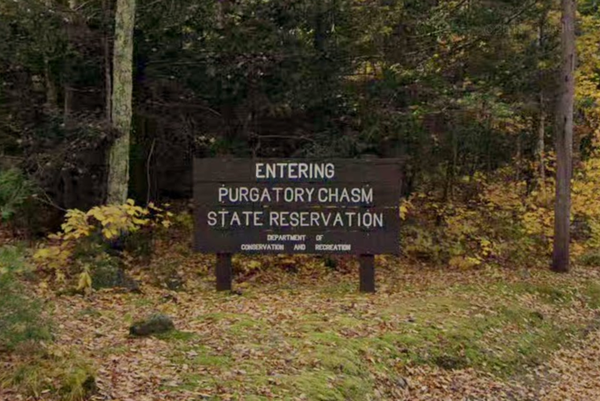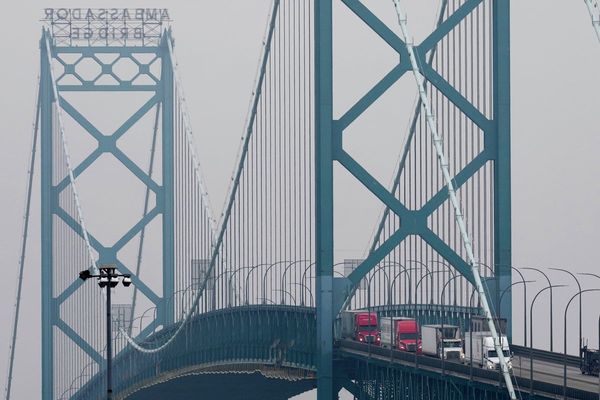
Public money, private patents: Unravelling India’s opacity over its Covid vaccines
Did the government adequately protect public interest while handing out public money to the private sector?
Prashant Reddy T
As the Covid-19 pandemic swept across the world in 2020 and countries scurried to develop and manufacture vaccines, the government of India announced that it was funding the development of a range of diagnostics, medicines and vaccines. By January 2023, the government triumphantly announced that its funding resulted in the development of four indigenous Covid vaccines in partnership with the private sector.
A less discussed issue about these four vaccines is whether the government adequately protected public interest while handing out public money to the private sector for the development of vaccines and other technologies required by Indians during the pandemic.
A part of this story has to do with how the public-funded Indian Council of Medical Research went on a patenting spree for Covid-related diagnostics, therapies and vaccines, as evidenced from the government’s reply in Parliament during the pandemic.
The other part of the story, which is the focus of this piece, are the terms on which the union government handed out public money to Indian pharmaceutical companies to develop Covid vaccines. In this piece, I will limit my discussion to three vaccines – Covaxin, an intranasal vaccine and a mRNA vaccine. I will also explain my failed attempt to access information on the terms of which the government funded the vaccines from the public exchequer.
The three vaccines
The first of the three vaccines is Covaxin, developed jointly by ICMR and Bharat Biotech, a private company. The government told Parliament that as per the MoU executed with Bharat Biotech, the intellectual property for the vaccine was to be shared between ICMR and Bharat Biotech.
In 2023, it became known that Bharat Biotech had filed a patent application for Covaxin in its own name back in 2020. Astonishingly, when quizzed by The Hindu on why it had not included ICMR as a co-applicant or the public sector scientists as co-inventors, the company claimed it did not have access to the MoU with ICMR when it filed the application!
Later, the company filed the supplementary paperwork before the Indian Patent Office to include the National Institute of Virology, which is an ICMR lab, as a co-applicant and NIV’s scientists as co-inventors.
Meanwhile, two other vaccines – the intranasal vaccine and the mRNA vaccine – were funded through the Department of Biotechnology’s Mission Covid Suraksha, administered by the Biotechnology Industry Research Assistance Council. The government said it had earmarked Rs 900 crore for this program for the development of a number of COVID related vaccines and diagnostics.
In December 2020, BIRAC published an ‘Expression of Interest’ inviting applications for funding under this program. It contained the following clause on page 9:
“IP developed through this grant will be owned by and will be the responsibility of the applicant (unless stated otherwise) subject to pre-existing legal arrangements. The Mission to make affordable products shall be embraced by the Grantees.”
This clause would entitle the companies developing the vaccines to file patent applications for the technologies developed with public money. This by itself would not be a problem if the government imposed certain conditions in the funding agreement to protect public interest.
How was public money handed over?
In this context it is important for transparency regarding the terms on which ICMR, BIRAC and the Department of Biotechnology protected the interests of India’s tax-paying citizens while handing out public money to private companies. This question is especially important in India because we are one of the few countries where the public sector spends more than the private sector in R&D. The country’s private sector is notoriously stingy when it comes to investing in R&D. Even pharmaceutical companies making healthy profits rarely invest in the research and development of new molecules or vaccines.
Take, for example, the Serum Institute of India (the largest manufacturer of vaccines in the world) which invested Rs 1,000 crore to purchase a stake in Dharma Productions, a loss-making producer of Bollywood movies. Then there’s Aurobindo Pharma, one of the largest and most profitable pharma companies in India which invested heavily in real estate development in Hyderabad. Neither company has a notable track record in the development of new molecules or vaccines.
Thus if public money is the primary source of funding for even the private sector pursuing R&D, it is important to have transparency in how these funding decisions are made by bureaucrats – and on what terms.
The RTI applications for the grant agreements
It was in this spirit that I filed two applications – one with ICMR, the other with BIRAC – under the Right to Information Act in May 2021. I sought copies of the funding agreements these public authorities had signed with Bharat Biotech and Gennova Biopharmaceuticals respectively for the development of the three vaccines discussed in this piece.
Now, why did I want this information?
The idea was to write a longer academic piece on how India handled public-funded innovation during the pandemic, the terms on which R&D was funded with public funds, and how the government might need a law to regulate publicly-funded research. I’ve been interested in understanding more about public-funded innovation in India for some time now, having pursued similar information more than a decade ago with regard to the Council of Science and Industrial Research.
The disclosure of such funding agreements between the government and private companies is routine in countries like the United States. Illustratively, here is an agreement between the National Institute of Health and Moderna for the development of mRNA vaccines. Unlike the United States, India does not have a law regulating the use of public funded inventions. A similar legislation proposed in 2010 by the UPA quickly lost steam, as a result of which the bureaucracy wields incredible discretionary powers when it comes to allocating public money to the private sector.
I was specifically interested in three issues whose details would be captured in these funding agreements.
Issue #1
What exactly was the government funding for each grant? In this context, I wanted to know if public money was being used to buy off-the-shelf technology, or whether it was being used to run clinical trials for this technology in India.
This was a valid question to ask because both Bharat Biotech and Gennova Biopharmaceuticals initially announced that they were jointly developing the vaccines with foreign partners.
For example, here is a press release by Bharat Biotech announcing that its intra-nasal vaccine was developed in partnership with Washington University. Washington University also put out a press release that claimed it developed the technology and licensed it to Bharat Biotech. In pertinent part, its press release stated the following:
“Diamond and Curiel, along with members of their laboratories, created the nasal vaccine at Washington University in the early months of the COVID-19 pandemic. In summer 2020, Washington University licensed the rights to develop, manufacture and commercialize the technology in India to Bharat Biotech International Limited, a global leader in vaccine innovation and a developer of vaccines for infectious diseases.”
Similarly, Gennova Biopharmaceuticals, which received BIRAC funding to develop an mRNA vaccine, struck a deal with American biotech company HDT Biotech. As per Emcure’s (Gennova’s parent company) public offering documents, its subsidiary Gennova and HDT entered into a licensing agreement for lipid inorganic nanoparticle carrier technology, which is the most crucial component for a mRNA vaccine.
In July 2020, a few months after the pandemic began, India’s Department of Biotechnology published a press release announcing that it was funding clinical trials for this particular mRNA vaccine candidate, being developed jointly by Gennova and HDT, through BIRAC.
By March 2022, this deal appears to have gone sour with HDT initiating arbitration in London against Gennova, accusing it of being in breach of the licensing agreement and misappropriating its mRNA technologies. HDT also initiated litigation in the United States against Emcure, Gennova’s parent company.
Although this lawsuit against Emcure was dismissed by the American court, the complaint filed by HDT before the American court is now a public record and can be accessed here. It contains the juicy details of the allegations levelled against Emcure and Gennova, including this paragraph:
“Emcure claims that the vaccine and platform were developed by its minor subsidiary Gennova Biopharmaceuticals Ltd. Were that true, it would be stunning. Emcure and Gennova have no track record of developing original products. They also have no prior experience with RNA vaccines. Yet Emcure claims to have succeeded where many leading multinational developers have failed: in inventing a safe and effective mRNA vaccine against COVID-19.
“Emcure’s Cinderella story is a fairy tale spun to lure investors to a generics maker whose prior attempt to go public failed for lack of interest. The truth is mundane: Emcure stole HDT’s technology, which HDT had licensed to its subsidiary Gennova for manufacture and distribution in India.”
While this litigation was pending, Gennova went ahead with clinical trials for the vaccine candidate which received emergency regulatory approval from India’s Central Drugs Standard Control Organisation in 2022. HDT Bio also claimed the vaccine to be its own in a press release, despite the ongoing litigation. For its part, the government of India proudly announced on June 24, 2023 that “India’s first mRNA vaccine has been developed using the indigenous platform technology by Gennova, with funding support from…” the DBT and BIRAC.
Finally, in May 2024, just three months before Emcure went public on Indian stock exchanges, it announced that HDT and Gennova had settled their dispute and entered into a new agreement, whose details are not publicly available.
Issue #2
The second issue, which I was hoping to find answers to in the funding agreements, was the manner in which the funding agreement approached the issue of IP protection of the inventions resulting from public funding. Were these inventions to be patented jointly by the government and these pharmaceutical companies or was the government mandating non-exclusive licensing of the patents at least for the duration of the pandemic.
These were valid questions because from a preliminary search of the Patent Office database, it appears that both Bharat Biotech and Gennova had filed patent applications, in their names, for some aspects of the three vaccines - Covaxin, the intranasal vaccine and the mRNA vaccine. (A typical vaccine will be covered by multiple patents for different aspects) This is not uncommon and depends entirely on the terms of the funding provided by the government.
Issue #3
The third issue, that may have been answered in the funding agreements, was regarding the pricing of these vaccines and whether the government ensured in the funding agreement that it would have a say in the pricing of the vaccine. This was a valid question since each dose of the mRNA vaccine developed by Gennova was priced at a princely Rs 2,292 while each dose of the intranasal vaccine was priced at Rs 800 by Bharat Biotech. In contrast, the government had informed Parliament, in July 2021, that it had purchased Covaxin at Rs. 215 per dose and Covishield at Rs. 205 per dose.
The rejection of the RTI applications
Both ICMR and BIRAC rejected my requests under the RTI Act, citing the intellectual property and confidentiality exception under Section 8(1)(d). The two decisions by two different commissioners can be read here and here.
Their rejection came despite a precedent of the Central Information Commission (CIC) in Navroz Mody v. Bombay Port Trust decided in 2009. This case involved the disclosure of agreements for Public Private Partnerships (PPP) where private companies developed and maintained infrastructure projects with public money. The important aspect of this case is the fact that the erstwhile Planning Commission and the Comptroller & Auditor General were on record supporting public disclosure of PPP agreements. In its order, the CIC concluded that PPPs involving the expenditure of public money were required to be disclosed to the public under the RTI Act.
That decision applied squarely to my RTI applications because public money was being handed out to private companies to develop vaccines. In fact, BIRAC regularly describes its funding model as a PPP model.
Since my RTI applications were rejected, I approached the CIC in 2021, which quite incredibly ignored its own precedent in Navroz Mody. Unfortunately, the CIC these days has developed a reputation for ruling in favour of only the government – I have a longer piece published on Newslaundry describing how I lost eight out of nine appeals before the same information commissioner.
The litigation before the Delhi High Court
After the CIC rejected my appeals, I approached the Delhi High Court in December 2022 seeking judicial review of the CIC’s orders. In the early days of the case in January 2023, Bharat Biotech’s lawyer made a series of false allegations against me, including a false claim that there were judicial orders requiring me to take down publications sponsored by a non-profit foundation on whose board I was a director. My response can be read here.
As legal strategies go, it is strange to level ad-hominem attacks in a case involving the RTI Act because this is a law where the standing of the citizen requesting information makes no difference. The law is very clear that citizens are not required to provide any reason for requesting the information.
Another false allegation made by Bharat Biotech’s lawyer in the January hearing made its way into the order of the Delhi High Court recording the day’s argument. This was a claim regarding Thakur Family Foundation, a non-profit founded by Dinesh Thakur, the whistleblower in the Ranbaxy case, and on whose board I was a director at the time.
In pertinent part, Bharat Biotech’s lawyer accused TFF of having received a legal notice from the national drug regulator – CDSCO – for allegedly “working contrary to India’s interest”. This was a false allegation since TFF never received a notice from CDSCO. The drug regulator had in fact threatened Dinesh Thakur and me, individually, with a legal notice because we criticised the drug regulator after cough syrups exported from India killed 66 children in Gambia. We refused to withdraw our statements and the drug regulator never followed up with its legal threats, most likely, because it knew it had no case.
After being informed of the allegations recorded by the Delhi High Court against it, TFF issued a legal notice to Bharat Biotech threatening it with a lawsuit for defamation before American courts. Thereafter, Bharat Biotech filed pleadings in my case admitting that its earlier allegation – which had been recorded by the high court on January 16, 2023 about TFF receiving a legal notice from the government – had no factual basis. This was one of the many legal maneuvers attempted by Bharat Biotech before the Delhi High Court, the details of which are too tedious to relitigate in this column.
Amidst all this legal activity and mud-slinging, the main question of law raised in my petitions regarding the disclosure of the funding agreements for the three vaccines remained undecided. My petitions were caught in a loop of adjournments before the Delhi High Court due to a lack of time on the court’s part and because the court deemed there to be no urgency in hearing my petitions.
The withdrawal
Finally, after an endless loop of adjournments I withdrew these petitions (first filed in December 2022) in January this year. I informed the court that I was no longer interested in pursuing the issue since I had abandoned my research project.
It had been almost four years since I had first filed the RTI applications in May 2021 and two years since I approached the Delhi High Court. The Delhi High Court is entirely unpredictable on potential timelines – I have had one of my other RTI cases on the exact same point of law decided in three months. Another one of my RTI cases, regarding a missing enquiry committee report, dragged on for four years and, out of sheer litigation fatigue, I gave up on the main remedies that I had sought before the court.
Similarly, Dinesh Thakur, my co-author on The Truth Pill, abandoned a petition pending for six years before the Delhi High Court challenging the illegal approvals of three drugs by the drug regulator. This was also litigation fatigue – his petition was listed 24 times before the high court with no substantial arguments taking place on a single occasion.
These experiences aren’t an exception. As reported by Saurav Das for Article 14, the Delhi High Court has had a poor track record when it comes to hearing contentious cases under the RTI Act. Given this reality it made no sense for me to continue pursuing these cases before the Delhi High Court.
Long story short, we still have no idea of the terms on which BIRAC and ICMR engaged with private pharmaceutical companies to develop Covid vaccines. Such opacity portends poorly for India’s already abysmal track record when it comes to innovation. If scarce risk capital for innovation is coming primarily from the government, there needs to be far greater transparency in how this capital is being allocated by the government to the private sector. Unless this capital is allocated in a transparent and efficient manner, innovation will continue to lag in India.
Complaining about the media is easy. Why not do something to make it better? Click here to subscribe to Newslaundry.
Newslaundry is a reader-supported, ad-free, independent news outlet based out of New Delhi. Support their journalism, here.







